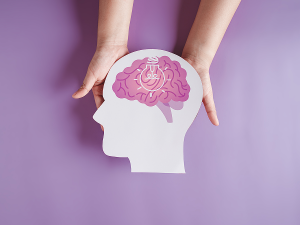Understanding Cerebral Palsy and Its Impact on Living with Disabilities
Cerebral palsy (CP) is a neurological disorder that usually appears in infancy or early childhood and is caused by damage to the motor control centers of the brain. It affects muscle coordination and can cause issues with balance, posture, and movement. People living with CP may also experience limited mobility due to weak muscles, impaired communication skills, difficulty controlling movement, and physical pain. Despite these challenges, individuals with CP can live independently and lead fulfilling lives if they are supported appropriately.

What Causes Cerebral Palsy?
The exact cause of cerebral palsy is unknown; however, it is thought that it occurs as a result of abnormal brain development before or shortly after birth. There are a number of potential causes including an infection during pregnancy such as rubella or toxoplasmosis; a head injury during childbirth; a lack of oxygen during delivery; or brain damage due to premature birth or low birth weight. Whatever the cause may be, the effects on an individual’s ability to move and communicate can be significant.
Managing Symptoms of Cerebral Palsy
Living with CP presents unique challenges for those affected by it. It requires daily management in order to maintain mobility and independence. Physical therapy can help individuals develop strength and learn new ways to move their body — such as using wheelchairs or walkers — so that they can participate in activities at home or out in the community. Speech therapy can also help those affected by CP communicate better by helping them understand their own speech patterns and how best to use their words clearly. The goal is for people living with cerebral palsy to gain as much independence as possible so that they are able to live life on their own terms — whatever those may be.
Utilising Assistive Technology for People Living With Disabilities
Assistive technology plays an important role in helping people living with disabilities manage daily tasks more easily and safely. From wheelchairs and walkers to communication devices like iPads, assistive technology empowers people living with disabilities by allowing them greater freedom of movement while minimising risk of injury from falls or other accidents. Assistive technology provides individuals more opportunities to take part in everyday activities which helps increase confidence, self-esteem, and overall quality of life!
Cerebral Palsy conclusion
In conclusion, cerebral palsy has a significant impact on those who live with this condition every day; however its effects do not have to define one’s entire life experience. With proper management through physical therapy, speech therapy, assistive technology, and supportive social networks — individuals living with CP can lead fulfilling lives full of purpose! By understanding the impact CP has on one’s ability to move around freely in society—as well as how assistive technologies can help—we can better support those who are affected by this condition every day!
If you are looking for Disability Support Service for your loved ones do not hesitate to contact us. Our friendly support team will help you understand the process and if you are looking to engage in our services either through existing ndis funding, changing service provider or private support. contactus@iseeksupport.com.au 1800960068








